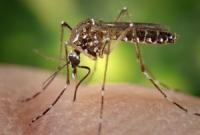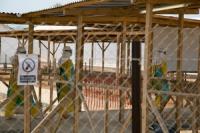-
WHO issues list of bacteria for which new antibiotics are urgently needed
WHO today published its first ever list of antibiotic-resistant “priority pathogens” – a catalogue of twelve families of bacteria that pose the greatest threat to human health. The list was drawn up in a bid to guide and promote research and development (R&D) of new antibiotics, as part of WHO’s efforts to address growing global resistance to antimicrobial medicines.
-
-
Fewer grain dust explosions reported in U.S. in 2016
The number of grain dust explosions in the United States fell to a 10-year low in 2016, but two of the incidents resulted in the first reported fatalities since 2013, according to an annual report released by Purdue University’s Department of Agricultural and Biological Engineering. There were five grain dust explosions in 2016, compared to eight in 2015 and a 10-year average of 9.2 per year.
-
-
Global food production needs to keep increasing, but not as fast as previously thought
“Food production must double by 2050 to feed the world’s growing population.” This truism has been repeated so often in recent years that it has become widely accepted among academics, policymakers and farmers, but now researchers are challenging this assertion and suggesting a new vision for the future of agriculture. Production likely will need to increase between 25 percent and 70 percent to meet 2050 food demand – meaning that production needs to keep increasing, but not as fast as many have claimed.
-
-
Risk of Ross River Virus could be next global epidemic
Australia’s Ross River Virus (RRV) could be the next mosquito-borne global epidemic according to a new research. The virus has been thought to be restricted largely to Australia and Papua New Guinea where it is harbored by marsupial animals, specifically kangaroos and wallabies, and spread by mosquitoes. The research shows that the virus may have been circulating silently in the South Pacific ever since a large epidemic of more than 500,000 cases in 1979-80, thought to have been started by an infected Australian tourist who travelled to Fiji.
-
-
Major deposit in the world’s largest seed collection in the Arctic
A major seed deposit critical to ensuring global food security was made to the Svalbard Global Seed Vault in the Arctic Circle today. The Svalbard Global Seed Vault is the largest collection of agricultural biodiversity in the world. Located in Longyearbyen, Svalbard, the Seed Vault is owned by the Norwegian government. Seed samples for some of the world’s most vital food sources like the potato, sorghum, rice, barley, chickpea, lentil, and wheat will be deposited at Svalbard in the coming days, bringing the total number of seed samples at the facility to 930,821.
-
-
Device rapidly, accurately, inexpensively detects Zika virus at airports, other sites
About the size of a tablet, a portable device that could be used in a host of environments like a busy airport or even a remote location in South America, may hold the key to detecting the dreaded Zika virus accurately, rapidly and inexpensively using just a saliva sample. While scientists across the world are scrambling to find some sort of immunization, researchers are working to develop a diagnostic tool to reduce the impact of the outbreak until a vaccine is identified.
-
-
Contact tracing, targeted insecticide spraying can curb dengue outbreaks

Contact tracing — a process of identifying everyone who has come into contact with those infected by a particular disease — combined with targeted, indoor spraying of insecticide can greatly reduce the spread of the mosquito-borne dengue virus. The new approach of using contact tracing to identify houses for targeted insecticide spraying was between 86 and 96 percent effective in controlling dengue fever during the Cairns outbreak. By comparison, vaccines for the dengue virus are only 30 to 70 percent effective, depending on the type of virus — or serotype — involved.
-
-
Terrorists could kill 30 million people within a year using bioweapons: Bill Gates
Bill Gates, in a speech at the Munich Security Conference, compared the dangers to nuclear war and bioterrorism. “The next epidemic could originate on the computer screen of a terrorist intent on using genetic engineering to create a synthetic version of the smallpox virus, or a super contagious and deadly strain of the flu,” he said. “Whether it occurs by a quirk of nature or at the hand of a terrorist, epidemiologists say a fast-moving airborne pathogen could kill more than thirty million people in less than a year.”
-
-
Preventing a “post-antibiotic era”
A landmark report by the World Health Organization in 2014 observed that antibiotic resistance — long thought to be a health threat of the future — had finally become a serious threat to public health around the world. A top WHO official called for an immediate and aggressive response to prevent what he called a “post-antibiotic era, in which common infections and minor injuries which have been treatable for decades can once again kill.”
-
-
Acting fast: Two months to stop pandemic X from taking hold
Over the past several years, DARPA-funded researchers have pioneered RNA vaccine technology, a medical countermeasure against infectious diseases that uses coded genetic constructs to stimulate production of viral proteins in the body, which in turn can trigger a protective antibody response. As a follow-on effort, DARPA funded research into genetic constructs that can directly stimulate production of antibodies in the body.
-
-
Disease “superspreaders” were the driving cause of 2014 Ebola epidemic

A new study about the overwhelming importance of “superspreaders” in some infectious disease epidemics has shown that in the catastrophic 2014-15 Ebola epidemic in West Africa, about 3 percent of the people infected were ultimately responsible for infecting 61 percent of all cases. The issue of superspreaders is so significant, scientists say, that it’s important to put a better face on just who these people are. It might then be possible to better reach them with public health measures designed to control the spread of infectious disease during epidemics.
-
-
Genetic tool improves arsenic studies
Arsenic-contaminated drinking water impacts millions of people worldwide. Groundwater contamination is primarily caused by microbes that convert one form of arsenic into another form that can infiltrate groundwater. Researchers developed a genetic tool that makes it easier to identify which microbial species have the arsenic-converting genes.
-
-
How a travel ban could worsen doctor shortages in US hospitals and threaten primary care
While the world waits for a final decision on President Trump’s travel ban, potentially from the Supreme Court, it’s critical to look at the potential ramifications of the ban. As physicians involved with educating and training the next generation of doctors, we see dire consequences for health care delivery in our country if the travel ban is reinstated. President Trump’s immigration ban has the potential for immediate ramifications for the hospital and health care system workforce in the U.S. Long term, decreases in the number of international medical graduates in training will result in fewer primary care physicians and general surgeons, just as the country is likely to need more. This immigration policy can have significant adverse impacts on health care delivery and the health of Americans. These consequences should be critically considered in related immigration and travel ban policy decisions moving forward.
-
-
U.K. nuclear safety regulations place too low a value on human life

New research has shown that the benchmark used by the U.K. Office for Nuclear Regulation for judging how much should be spent on nuclear safety has no basis in evidence and places insufficient value on human life. The review suggests it may need to be ten times higher — between £16 million and £22 million per life saved.
-
-
World leaders urged to take action to avert existential global risks
World leaders must do more to limit risk of global catastrophes, according to a report by Oxford academics. He academic define global catastrophe as a risk “where an adverse outcome would either annihilate Earth-originating intelligent life or permanently and drastically curtail its potential.” Three of the most pressing possible existential risks for humanity are pandemics, extreme climate change, and nuclear war.
-